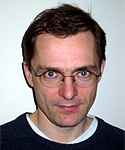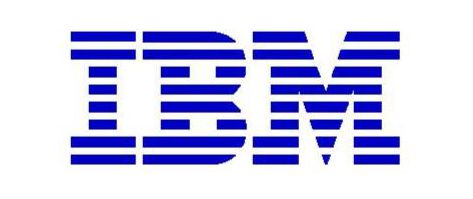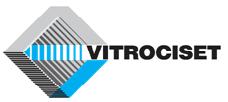Jiri Matas:
 Dr.
Jiri Matas received the MSc degree in cybernetics (with honours) from the
Czech Technical University, Prague, Czech Republic, in 1987 and the PhD degree
from the University of Surrey, UK, in 1995. He has published more than 150
papers in refereed journals and conferences. His publications have more than
3333 citations in the ISI Thomson-Reuters Science Citation Index, his SCI
H-index is 21. He received the best paper prize at the British Machine Vision
Conferences in 2002 and 2005 and at the Asian Conference on Computer Vision in
2007. He served in various roles at major international conferences (e.g. ICCV,
CVPR, NIPS, ECCV), co-chairing ECCV 2004 and CVPR 2007. He is on the editorial
board of the International Journal of Computer Vision and serves as the
Associate Editor-in-Chief of IEEE Transactions on Pattern Analysis and Machine
Intelligence. His research interests include object recognition, image
retrieval, sequential pattern recognition, ensemble methods, invariant feature
detection, and Hough Transform and RANSAC-type optimization.
Dr.
Jiri Matas received the MSc degree in cybernetics (with honours) from the
Czech Technical University, Prague, Czech Republic, in 1987 and the PhD degree
from the University of Surrey, UK, in 1995. He has published more than 150
papers in refereed journals and conferences. His publications have more than
3333 citations in the ISI Thomson-Reuters Science Citation Index, his SCI
H-index is 21. He received the best paper prize at the British Machine Vision
Conferences in 2002 and 2005 and at the Asian Conference on Computer Vision in
2007. He served in various roles at major international conferences (e.g. ICCV,
CVPR, NIPS, ECCV), co-chairing ECCV 2004 and CVPR 2007. He is on the editorial
board of the International Journal of Computer Vision and serves as the
Associate Editor-in-Chief of IEEE Transactions on Pattern Analysis and Machine
Intelligence. His research interests include object recognition, image
retrieval, sequential pattern recognition, ensemble methods, invariant feature
detection, and Hough Transform and RANSAC-type optimization.
For more, see
personal webpage
Object Tracking Techniques
Tracking is an enormously broad subject and methods differ in many aspects:
1. the way the appearance and shape of the tracked entity is modelled
(ranging for a square patch of image intensities or a colour histogram to
complex deformable models with many degrees of freedom),
2. whether the appearance and shape model is static, adaptive or learned
on-line (and, in the latter case, the method of updating the model).
3. how the pose of the entity is established in a new frame: by local
optimization, re-detection, regression or repeated segmentation
4. the representation of pose uncertainty (point estimate, or a distribution as
in condensation)
5. the motion model and the pose prediction method
6. the capability to detect a tracking failure and recover from it
7. and more: background modelling, causality v. non-causality, modelling
of dependencies of multiple motions, etc.
In the lecture we will present examples of tracking as local optimization, tracking as detection, tracking as regression, tracking as segmentation with differences in all aspects of tracking and > discuss their relative strengths and weakness. We will focus on the following:
- how to use learning to be fast
- online learning, avoiding the drift and "one adaption to the background,
and its over" problem
- detection tracking failure (as tracking always fails, sooner or later)
and recovery from failure.
- methods of tracker robustification




